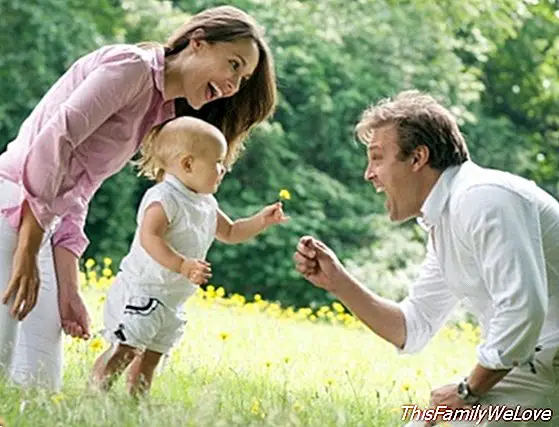Learning to walk, is my baby ready?

Learning to walk is the result of a long process that begins at the moment of birth and goes through fundamental stages of crawling and first steps that we can stimulate. All these stages in the evolution of the baby's displacement lead to mastering two basic aspects, which are the maturation of the nervous system and the trial-error technique.
Before starting to crawl and take their first steps, babies need to have developed their motor area. To be able to execute the movements related to the displacement, and to be able to walk, in the first place, the child has to learn to control different parts of his body: he has to reach an adequate development of the muscles, he has to be able to develop the sense of balance, etc. These are important acquisitions for our baby when he starts to take his first steps.
In order to learn to walk, thematuration of the brain and nervous system circuits, since to walk and to control all the movements that allow to put one foot after another supposes an important degree of the development of the brain.
On the other hand, the baby has to put into practicetrial-error technique. To learn to walk you have to fall many times, rehearse certain postures, take risks ... like little foals at birth.
Stages necessary to learn to walk
If you wonder if at the time oflearn to walk, will my baby be prepared?, you must know that the development of the motor area of babies goes through a few stages, which you have to know in order to help them learn to walk in the most efficient way possible:
1. Control of the spine. The dominion that the baby exercises on his column is the first one that appears chronologically.
2. Reinforcement of support reflexes, walking and, above all, crawling. Keep in mind that crawling is the first method of walking used by the child and is essential to obtain a bone maturity of legs, arms, spine and coordination of movements.
3. Ankle control. The sole of the foot must rest correctly on the ground to avoid secondary deformations. When you are able to take the first steps, the support will consist of putting on proper footwear with reinforcements in the heel and ankles.
4. Strengthening your own movements. One of the most common learning procedures at this age is imitation of the adult, so we must simply show how we are doing. For this we must bear in mind that the most important point of weight for maintaining balance is knee flexion. We can give a simple example for cases of doubt. Let's suppose we want to learn to ski or to skate: to maintain balance it is necessary to keep the knees bent.
Beatriz Bengoechea. Psychologist and family counselor
You may also like:
- Learning to walk, the first steps of the baby
- Booties two needles: learn to make them
- First steps, the ideal shoes for children
- Five fun shoes to learn to walk
- Baby crawling
- The first steps of the baby
- Abnormalities in the feet




